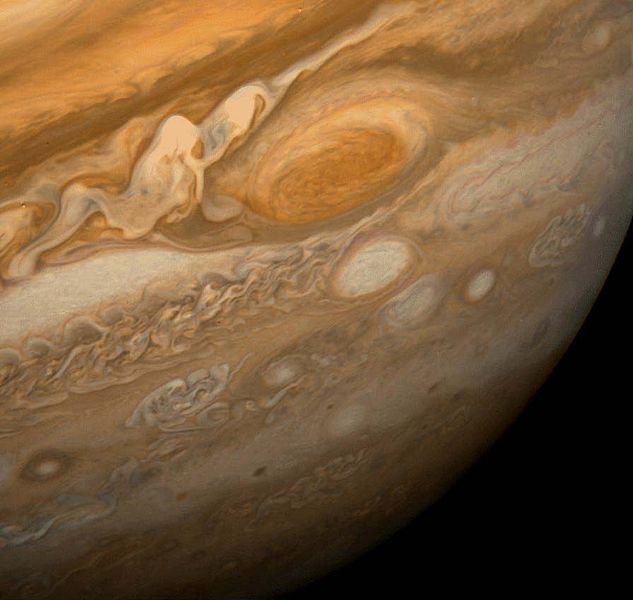Jupiter in opposition closeup and a transiting Great Red Spot

Jupiter has been putting on quite a show in the night sky lately as it officially reached opposition on October 28, 2011, making it a target of many astrophotographers as the gas giant shows itself off big and bright in the night sky. This animation from amateur astronomer Leonard E. Mercer from Malta shows Jupiter’s famous Great Red Spot moving across the surface of the mighty planet. Mercer captured a series of 12 images on the 27th and 28th (10pm – 2.00am. CET). Mercer used a C11 telescope and DMK 21 mono camera with RGB filters.
Opposition means an the planet is directly opposite the Sun as seen from Earth, which also put it at its closest point to Earth in the two planets’ orbits around the Sun. (UniverseToday)
The apparent magnitude of the planet at opposition during the period of the star chart is -2.8 (in 2011), -2.7 (in 2012) and -2.6 (in 2014). Jupiter’s apparent size (i.e. its angular width as seen from the Earth, measured in arcseconds, where 1 arcsecond = 1/3600 of a degree) at opposition is 49″.6 (in 2011) reducing to 48″.4 (in 2012) and 46″.8 (in 2014).
Because of Jupiter’s rapid rotation speed, its disk appears as an oblate spheroid through telescopes and high-magnification binoculars (i.e. it appears flattened at the poles and bulged at the equator). The dimension given above is the apparent equatorial diameter of the planet; its apparent polar diameter is about 6.3% less.
Superior conjunction (when Jupiter passes behind the Sun as seen from the Earth) takes place on May 13th 2012, June 19th 2013 and July 24th 2014. The planet is not visible from Earth for about two weeks on either side of these dates. At superior conjunction the magnitude fades by one whole magnitude to -1.8 (in 2012), -1.7 (in 2013) and -1.6 (in 2014) and the apparent diameter reduces to 32″.8 (in 2012), 32″.1 (in 2013) and 31″.4 (in 2014). (NakedEyePlanets)


Commenting rules and guidelines
We value the thoughts and opinions of our readers and welcome healthy discussions on our website. In order to maintain a respectful and positive community, we ask that all commenters follow these rules.